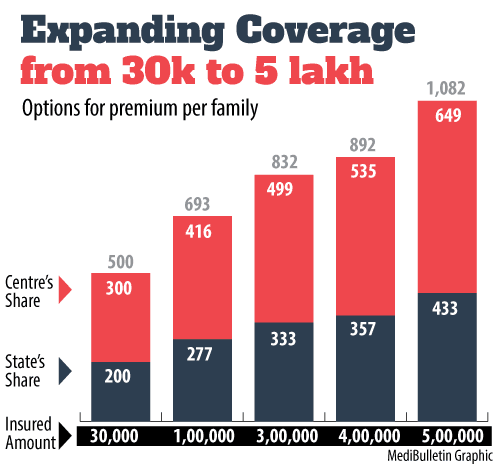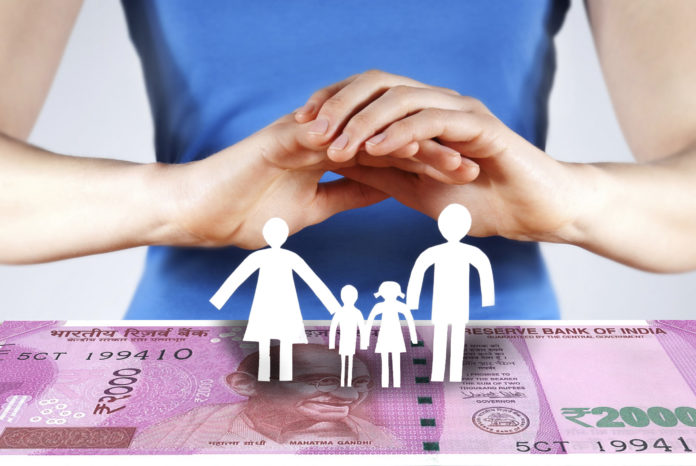At an estimated premium of Rs 1082 per family per year, the National Health Protection Scheme is expected to cost Rs 12000 cr
Modicare – as the proposed National Health Protection Scheme (NHPS) is being referred to within the government – will come at a substantial costs for states.
According to preliminary calculations done by Niti Ayog, state governments will have to shell out approximately Rs 4,330 crore annually for ambitious health cover scheme for 50 crore people. For the first year, going by the 50% enrolment target that bill could be in the range of Rs 2000 crore.
The Ayog which is taking the lead in planning for NHPS, pegs the premium at Rs 1082 per family per year. The state share would come to Rs 433 per family. The annual cost of the scheme is estimated to be Rs 12000 crore. The Union health ministry and Niti Ayog have already started the process of consultation with states. E-mails have gone out and video-conferencing with individual states have also started.
Average family size is 3.45 under RSBY; for the NHPS calculations the Ayog assumed a family size of 4. The calculations also presumed a higher utilization rate than RSBY. RSBY has an 1.4 per cent utilization rate, the NHPS estimates were made using a rate of 1.8-2.3 percent.
The changed funding pattern of “core” centrally sponsored schemes that came into effect in the last financial year, could mean an even higher burden on states. State spending on the existing health “flagship” the National Health Mission has almost doubled while the in the last three financial years. The total state share in NHM has risen from Rs 5167.21 crore to Rs 10160.10 crore in 2016-17. The central share in 2016-17 was Rs 18409.19 crore just 7.5% higher than that in 2014-15.

The NHPS calculations meanwhile are based on data from the different health protection schemes being run by the state governments and also the Rashtriya Swathya Bima Yojana (RSBY) that provides a modest Rs 30,000 worth of health cover to poor families. The total number of beneficiaries currently registered under RSBY is approximately Rs 3.8 crore. The government currently pays a premium of Rs 500 per family.
Average family size is 3.45 under RSBY; for the NHPS calculations the Ayog assumed a family size of 4. The calculations also presumed a higher utilization rate than RSBY. RSBY has an 1.4 per cent utilization rate, the NHPS estimates were made using a rate of 1.8-2.3 percent.
However, actuarial calculations are dynamic in their very nature with even minor movement of one variable resulting in huge changes in the premium. For example for the programme run by the Rajasthan government which provides a per family health cover of Rs 3.30 lakh per family, the state government paid a premium of Rs 500 per year till 2016-17 but this year it has been revised to around 1200. The premium amount would also be a function of the mode of implementation of the scheme.


